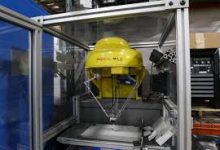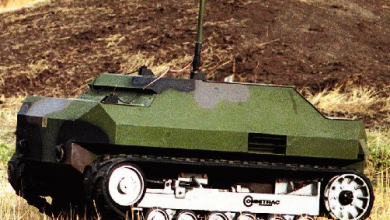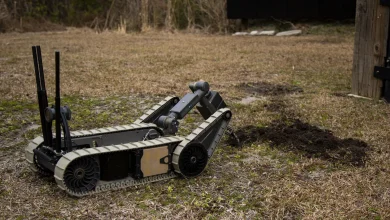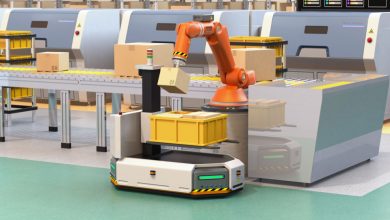Robotics in Inspection and Quality Control: Advancing Precision and Efficiency in Manufacturing
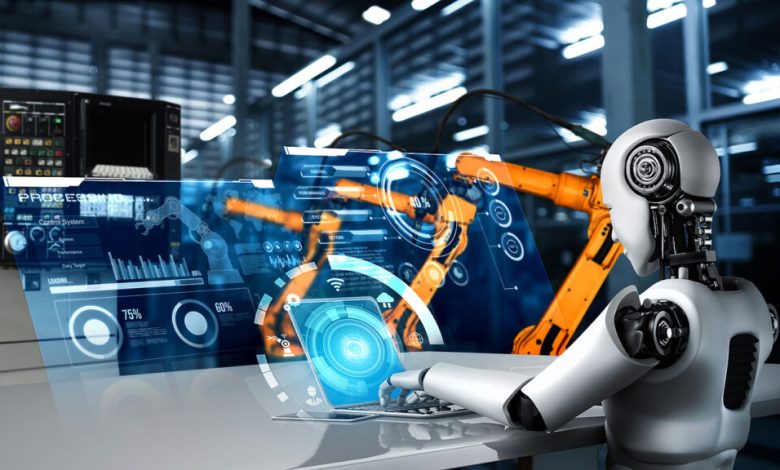
Introduction:
In modern manufacturing, maintaining high levels of product quality and ensuring compliance with industry standards are paramount. Inspection and quality control processes play a crucial role in achieving these objectives by identifying defects, deviations, and inconsistencies in products and components. Robotics has emerged as a transformative solution in inspection and quality control, offering unparalleled precision, efficiency, and reliability. This comprehensive exploration delves into the role of robotics in inspection and quality control, unraveling its significance, methodologies, and transformative impact on production processes.
Importance of Inspection and Quality Control:
Inspection and quality control are essential steps in manufacturing, aimed at ensuring that products meet specifications, standards, and customer expectations. These processes involve the assessment, measurement, and verification of product features, dimensions, and characteristics to identify defects, deviations, or anomalies. Inspection and quality control play a vital role in maintaining product integrity, reliability, and safety, as well as minimizing rework, scrap, and warranty costs. In industries such as automotive, aerospace, electronics, and medical devices, the accuracy and consistency of inspection and quality control are critical to product performance and regulatory compliance.
Significance of Inspection and Quality Control in Robotics
Introduction:
In the dynamic landscape of manufacturing, where precision, reliability, and safety are paramount, inspection and quality control stand as indispensable pillars. These processes ensure that products meet predefined standards, specifications, and customer expectations. In the realm of robotics, where automation and accuracy are central, the importance of inspection and quality control cannot be overstated. This comprehensive exploration delves into the profound significance of inspection and quality control in robotics, elucidating their role, methodologies, and transformative impact on manufacturing processes.
Ensuring Product Integrity:
Inspection and quality control play a pivotal role in ensuring the integrity and reliability of robotic systems and components. In robotics, where precision and accuracy are critical, even minor defects or deviations can have significant consequences on performance and safety. Inspection and quality control processes rigorously assess the structural integrity, functionality, and adherence to design specifications of robotic components, ensuring that they meet stringent quality standards before deployment. By detecting and rectifying defects early in the manufacturing process, inspection and quality control contribute to the overall reliability and longevity of robotic systems.
Guaranteeing Performance and Safety:
In industries where robots operate in close proximity to humans or interact with delicate materials, ensuring performance and safety is paramount. Inspection and quality control processes verify that robotic systems comply with safety regulations, ergonomic standards, and performance requirements to mitigate risks and hazards in the workplace. By evaluating factors such as mechanical integrity, electrical insulation, and software reliability, inspection and quality control contribute to the safe operation of robotic systems, protecting both workers and assets from potential harm or accidents.
Enhancing Product Quality and Consistency:
In today’s competitive market, delivering products of superior quality and consistency is imperative for maintaining a competitive edge and fostering customer satisfaction. Inspection and quality control processes meticulously scrutinize the attributes, dimensions, and functionality of robotic components to ensure that they meet or exceed predefined quality standards. By identifying and rectifying deviations, defects, or inconsistencies in manufacturing processes, inspection and quality control contribute to the production of high-quality products with uniform characteristics and performance, enhancing customer satisfaction and brand reputation.
Optimizing Production Efficiency:
Efficiency and productivity are core objectives in manufacturing, where time-to-market and cost-effectiveness are critical factors in competitiveness. Inspection and quality control processes streamline production workflows by identifying and rectifying bottlenecks, defects, or inefficiencies in manufacturing processes. By implementing automated inspection systems, robotics enable real-time monitoring, analysis, and feedback mechanisms that facilitate proactive decision-making and continuous improvement in production processes. This optimization leads to increased throughput, reduced cycle times, and enhanced resource utilization, ultimately driving greater efficiency and profitability in manufacturing operations.
Facilitating Regulatory Compliance:
In regulated industries such as aerospace, automotive, pharmaceuticals, and medical devices, compliance with industry standards, regulations, and quality management systems is non-negotiable. Inspection and quality control processes ensure that robotic systems and components adhere to regulatory requirements and industry standards, such as ISO 9001, ISO 13485, and AS9100. By documenting and maintaining comprehensive records of inspection activities, robotics facilitate audit readiness, regulatory compliance, and certification, enabling manufacturers to demonstrate conformity to regulatory authorities and customers.
Driving Continuous Improvement:
Continuous improvement is a cornerstone of modern manufacturing philosophy, emphasizing the pursuit of excellence through incremental enhancements in processes, products, and performance. Inspection and quality control processes provide valuable insights into the root causes of defects, deviations, or non-conformities in manufacturing processes, enabling data-driven decision-making and corrective actions. By analyzing trends, identifying patterns, and implementing preventive measures, robotics contribute to a culture of continuous improvement, fostering innovation, efficiency, and competitiveness in manufacturing organizations.
Conclusion:
In conclusion, inspection and quality control are integral components of robotics manufacturing, ensuring product integrity, performance, and safety while driving efficiency, compliance, and continuous improvement. As robotics technology continues to evolve, inspection and quality control processes will play an increasingly vital role in optimizing production processes, enhancing product quality, and fostering innovation in manufacturing. By leveraging advanced robotics systems and automated inspection technologies, manufacturers can achieve unprecedented levels of precision, reliability, and competitiveness in today’s dynamic marketplace.
Traditional Inspection Methods:
Historically, inspection and quality control in manufacturing were primarily performed using manual methods or dedicated inspection stations. Manual inspection, while simple and straightforward, is subject to human error, variability, and fatigue, leading to inconsistent results and increased inspection time. Dedicated inspection stations, while more reliable, are often inflexible, requiring significant space, resources, and setup time. These traditional methods have limitations in terms of accuracy, repeatability, and efficiency, making them unsuitable for modern manufacturing environments characterized by high volumes, tight tolerances, and rapid production cycles.
Exploring Traditional Inspection Methods in Robotics
Introduction:
Traditional inspection methods have long been utilized in various industries to ensure product quality, verify compliance with standards, and maintain consistency in manufacturing processes. While these methods have served their purpose for decades, advancements in robotics technology have prompted a shift towards more automated and precise inspection techniques. This comprehensive exploration delves into the traditional inspection methods commonly employed in robotics manufacturing, elucidating their methodologies, applications, and limitations.
Visual Inspection:
Visual inspection is one of the oldest and most straightforward methods used to assess the quality and integrity of products. Human inspectors visually examine components, assemblies, or finished products for defects, irregularities, or deviations from specified criteria. Visual inspection can be performed using magnifying glasses, microscopes, or cameras to enhance visibility and detect minute defects. While visual inspection is simple and cost-effective, it is subject to human error, fatigue, and variability, leading to inconsistent results and limited reliability, especially for complex or subtle defects.
Visual Inspection in Robotics: Enhancing Precision and Efficiency in Manufacturing
Introduction:
Visual inspection stands as one of the oldest and most fundamental methods in quality control, providing manufacturers with a means to assess the integrity and quality of products. In recent years, the integration of robotics technology has revolutionized visual inspection processes, enabling unparalleled precision, efficiency, and reliability. This comprehensive exploration delves into the significance, methodologies, and transformative impact of visual inspection in robotics, elucidating its role in modern manufacturing.
Importance of Visual Inspection:
Visual inspection plays a pivotal role in ensuring product quality, integrity, and compliance with standards in manufacturing. It involves the visual examination of products, components, or assemblies to detect defects, irregularities, or deviations from predefined criteria. Visual inspection is versatile, cost-effective, and suitable for a wide range of applications across various industries, including automotive, electronics, pharmaceuticals, and consumer goods. In industries where product appearance, aesthetics, and surface quality are critical, such as cosmetics or luxury goods, visual inspection becomes even more indispensable.
Evolution of Visual Inspection with Robotics:
Traditionally, visual inspection was performed manually by human inspectors, relying on their visual acuity and experience to detect defects. However, manual inspection is prone to human error, fatigue, and subjectivity, leading to inconsistent results and limited scalability. The integration of robotics technology has revolutionized visual inspection processes, offering precision, repeatability, and automation. Industrial robots equipped with advanced vision systems, cameras, and image processing algorithms can perform visual inspection tasks with unparalleled accuracy and speed. Robotics enables manufacturers to automate visual inspection processes, reduce cycle times, and improve product quality and consistency.
Conclusion:
In conclusion, visual inspection robotics represents a transformative approach to quality control in modern manufacturing. By leveraging advanced vision systems, cameras, and image processing algorithms, robotics enables manufacturers to achieve unparalleled precision, efficiency, and reliability in visual inspection processes. Visual inspection robotics enhances product quality, integrity, and compliance while reducing cycle times, minimizing defects, and optimizing production workflows. As robotics technology continues to advance, the role of visual inspection in manufacturing will continue to expand, driving innovation and excellence in quality control.
Dimensional Inspection:
Dimensional inspection involves measuring the dimensions, tolerances, and geometrical features of products or components to ensure compliance with design specifications. Traditional dimensional inspection methods include manual measurements using calipers, micrometers, or gauges, as well as coordinate measuring machines (CMMs) for automated measurement of complex geometries. While dimensional inspection provides accurate measurements, it is labor-intensive, time-consuming, and prone to errors due to manual handling and interpretation of measurements.
Dimensional Inspection in Robotics: Advancing Precision Manufacturing
Introduction:
Dimensional inspection is a critical aspect of quality control in manufacturing, ensuring that products meet precise dimensional requirements and tolerances. With the integration of robotics technology, dimensional inspection has undergone a significant transformation, offering enhanced accuracy, efficiency, and automation. This comprehensive exploration delves into the significance, methodologies, and transformative impact of dimensional inspection in robotics, elucidating its role in modern manufacturing processes.
Importance of Dimensional Inspection:
Dimensional inspection plays a vital role in verifying the dimensional accuracy, tolerances, and geometrical features of products or components. It ensures that manufactured parts conform to design specifications, standards, and customer requirements, thereby minimizing defects, rework, and scrap. Dimensional inspection is crucial in industries where precise dimensions are critical for product performance, assembly fit, and interoperability, such as aerospace, automotive, medical devices, and electronics.
Evolution of Dimensional Inspection with Robotics:
Traditionally, dimensional inspection was performed using manual measurement tools such as calipers, micrometers, and gauges, or through coordinate measuring machines (CMMs). However, manual inspection is time-consuming, labor-intensive, and prone to human error, leading to inconsistent results and limited scalability. The integration of robotics technology has revolutionized dimensional inspection processes, offering precision, repeatability, and automation. Industrial robots equipped with advanced sensors, probes, and measurement tools can perform dimensional inspection tasks with unparalleled accuracy and efficiency, transforming manufacturing operations.
Conclusion:
In conclusion, dimensional inspection robotics represents a transformative approach to quality control in modern manufacturing. By leveraging advanced sensors, probes, and measurement tools, robotics enables manufacturers to achieve unparalleled precision, efficiency, and reliability in dimensional inspection processes. Dimensional inspection robotics enhances product quality, integrity, and compliance while reducing cycle times, minimizing defects, and optimizing production workflows. As robotics technology continues to advance, the role of dimensional inspection in manufacturing will continue to expand, driving innovation and excellence in quality control.
Surface Inspection:
Surface inspection focuses on evaluating the surface quality, texture, and finish of products or components to detect defects such as scratches, dents, or blemishes. Traditional surface inspection methods include visual examination, tactile inspection using probes o

r styluses, and non-destructive testing techniques such as dye penetrant inspection or magnetic particle inspection. While surface inspection is effective for detecting visible defects, it may overlook subsurface defects or imperfections that can affect product performance or integrity.
Surface Inspection in Robotics: Elevating Quality Assurance in Manufacturing
Introduction:
Surface inspection stands as a critical component of quality assurance in manufacturing, ensuring that products meet standards of appearance, texture, and finish. With the integration of robotics technology, surface inspection processes have undergone a significant transformation, offering enhanced accuracy, efficiency, and automation. This comprehensive exploration delves into the significance, methodologies, and transformative impact of surface inspection in robotics, elucidating its role in modern manufacturing processes.
Importance of Surface Inspection:
Surface inspection plays a pivotal role in ensuring the visual appearance, texture, and finish of products meet quality standards and customer expectations. It involves the examination of product surfaces to detect defects, blemishes, scratches, or imperfections that may affect product performance, aesthetics, or functionality. Surface inspection is crucial in industries where product appearance and surface quality are critical for brand reputation, customer satisfaction, and regulatory compliance, such as automotive, electronics, cosmetics, and consumer goods.
Evolution of Surface Inspection with Robotics:
Traditionally, surface inspection was performed manually by human inspectors, relying on visual inspection or tactile methods such as touch and feel. However, manual inspection is subjective, time-consuming, and prone to human error, leading to inconsistent results and limited scalability. The integration of robotics technology has revolutionized surface inspection processes, offering precision, repeatability, and automation. Industrial robots equipped with advanced vision systems, cameras, and image processing algorithms can perform surface inspection tasks with unparalleled accuracy and efficiency, transforming manufacturing operations.
Conclusion:
In conclusion, surface inspection robotics represents a transformative approach to quality control in modern manufacturing. By leveraging advanced vision systems, cameras, and image processing algorithms, robotics enables manufacturers to achieve unparalleled precision, efficiency, and reliability in surface inspection processes. Surface inspection robotics enhances product quality, integrity, and compliance while reducing cycle times, minimizing defects, and optimizing production workflows. As robotics technology continues to advance, the role of surface inspection in manufacturing will continue to expand, driving innovation and excellence in quality assurance.
Functional Testing:
Functional testing involves verifying the performance and functionality of products or components by subjecting them to simulated operating conditions or test scenarios. Traditional functional testing methods include manual testing by human operators or specialized test equipment, as well as automated testing using test fixtures or custom-built test rigs. While functional testing provides valuable insights into product performance, it is limited by the complexity of test setups, the availability of test equipment, and the expertise of test operators.
Statistical Process Control (SPC):
Statistical Process Control (SPC) is a method for monitoring and controlling manufacturing processes to ensure consistency and quality in production. SPC involves collecting data from production processes, analyzing the data using statistical techniques, and using the results to make informed decisions and improvements in manufacturing processes. Traditional SPC methods include control charts, histograms, and process capability analysis to monitor process variability, identify trends, and detect deviations from target values. While SPC provides valuable insights into process performance, it requires extensive data collection, analysis, and interpretation, making it time-consuming and resource-intensive.
Sampling Inspection:
Sampling inspection involves inspecting a representative sample of products or components from a production batch to assess overall quality and conformity. Traditional sampling inspection methods include random sampling, systematic sampling, or stratified sampling techniques to select samples for inspection. Inspectors visually examine or measure the selected samples according to predefined acceptance criteria or sampling plans to determine whether the production batch meets quality standards. While sampling inspection is efficient for large production batches, it may overlook individual defects or variations that can affect product quality.
Conclusion:
In conclusion, traditional inspection methods have played a significant role in ensuring product quality, consistency, and compliance in robotics manufacturing. While these methods have served their purpose for decades, they are increasingly being supplemented or replaced by more advanced and automated inspection techniques enabled by robotics technology. By leveraging robotics systems, sensors, and machine learning algorithms, manufacturers can achieve unprecedented levels of precision, efficiency, and reliability in inspection processes, driving innovation and excellence in today’s dynamic manufacturing landscape.
Role of Robotics in Inspection and Quality Control:
Robotics offers a versatile and efficient solution to overcome the limitations of traditional inspection methods. Industrial robots equipped with advanced sensors, cameras, and measurement tools can perform inspection tasks with high precision, speed, and repeatability. These robots can navigate complex workpieces, surfaces, and geometries to detect defects, deviations, or anomalies with accuracy and reliability. Robotics enables manufacturers to automate inspection processes, reduce cycle times, and improve product quality and consistency. By leveraging robotics technology, manufacturers can achieve greater throughput, reliability, and traceability in inspection and quality control.
Types of Inspection Tasks:
Industrial robots are used for a wide range of inspection tasks across various industries and applications. Some common types of inspection tasks include:
Dimensional Inspection:
Involves measuring the dimensions, tolerances, and geometrical features of workpieces to ensure compliance with design specifications.
Surface Inspection:
Involves assessing the surface quality, texture, and finish of workpieces to detect defects such as scratches, dents, or blemishes.
Defect Detection:
Involves identifying defects, flaws, or irregularities in workpieces, components, or materials.
Sorting and Classification:
Involves categorizing workpieces or products based on predefined criteria such as size, shape, color, or quality.
Integration with Quality Management Systems:
Industrial robots can be integrated with quality management systems (QMS) to streamline inspection and quality control processes. QMS software enables manufacturers to define inspection criteria, set tolerance limits, and track inspection results in real-time. Integration with QMS allows robots to communicate with other systems, such as manufacturing execution systems (MES) or enterprise resource planning (ERP) systems, to ensure seamless data exchange and traceability throughout the production process. This integration enhances visibility, transparency, and accountability in inspection and quality control operations, enabling manufacturers to achieve greater compliance, efficiency, and customer satisfaction.
Advantages of Robotics in Inspection and Quality Control:
Industrial robotics offers several advantages for inspection and quality control processes, including:
Precision and Accuracy:
Robots can perform inspection tasks with high precision and accuracy, ensuring consistent and reliable results.
– Speed and Efficiency:
Robots can inspect workpieces at high speeds, reducing cycle times and increasing throughput in production.
Flexibility and Adaptability:
Robots can be programmed to adapt to different workpieces, materials, and inspection requirements, providing flexibility in production.
Safety and Ergonomics:
Robots can operate in hazardous or uncomfortable environments, reducing the risk of injury or fatigue for human operators.
Cost-Effectiveness:
Robots can reduce labor costs, minimize scrap and rework, and optimize production workflows, resulting in cost savings for manufacturers.
Conclusion:
In conclusion, robotics has revolutionized inspection and quality control in manufacturing, offering precision, efficiency, and reliability that surpass traditional methods. By leveraging advanced sensors, cameras, and measurement tools, industrial robots can perform a wide range of inspection tasks with high accuracy and speed. Robotics enables manufacturers to automate inspection processes, improve product quality and consistency, and reduce production costs. As robotics technology continues to advance, the role of robotics in inspection and quality control will continue to expand, driving innovation and excellence in manufacturing.

